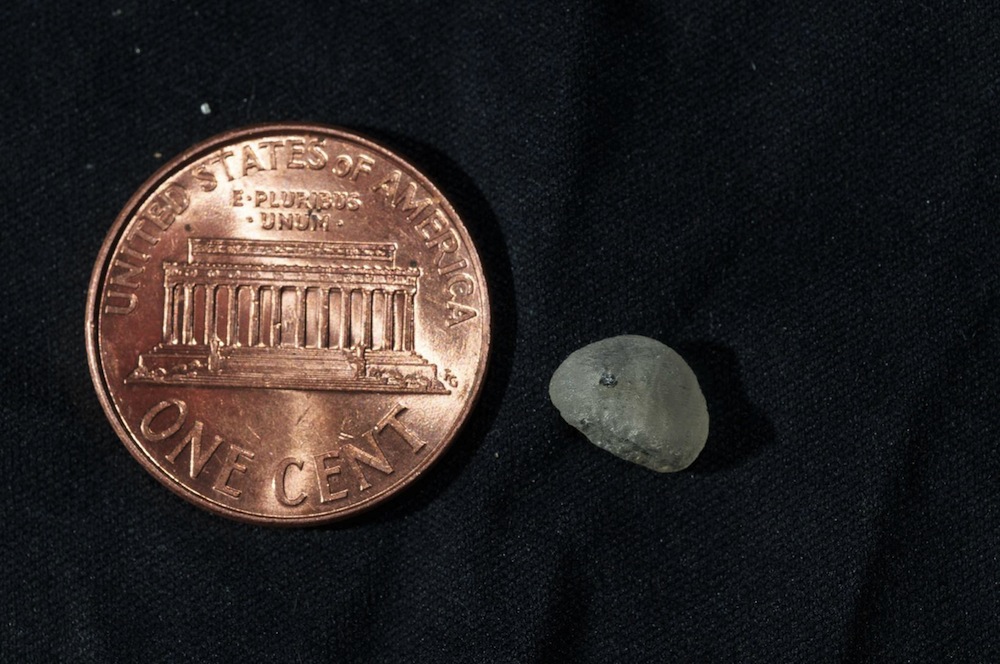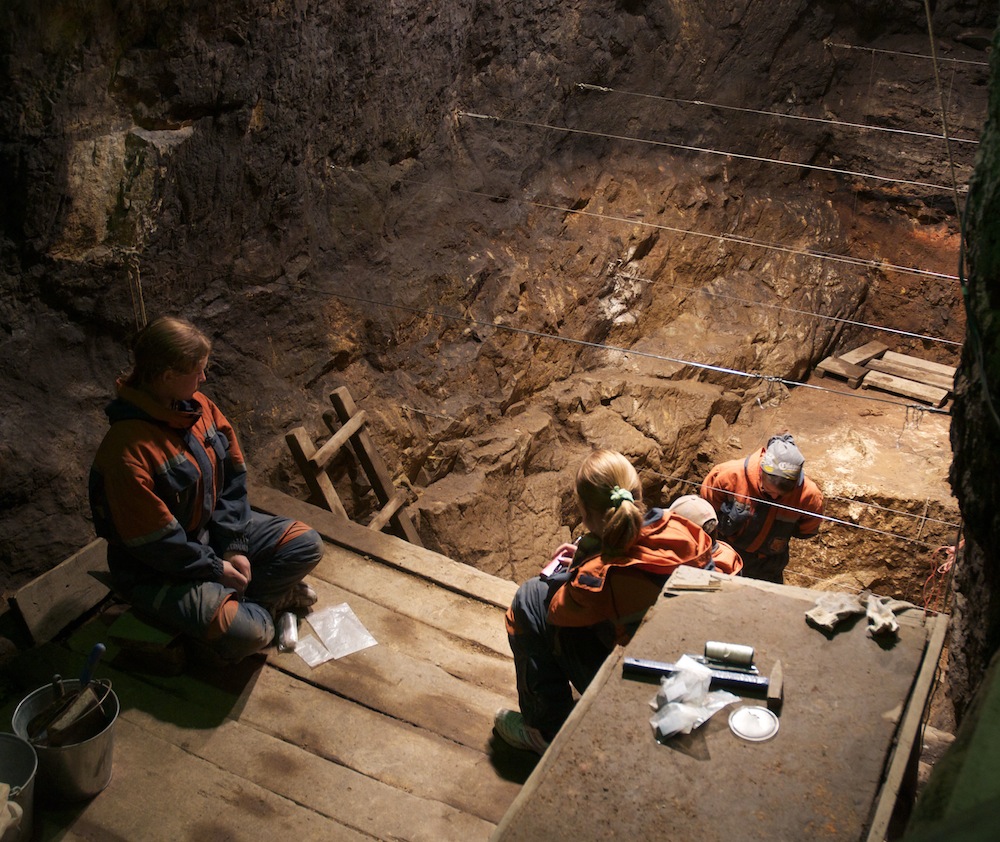Genome of Mysterious Extinct Human Reveals Brown-Eyed Girl

The genome of a recently discovered branch of extinct humans known as the Denisovans that once interbred with us has been sequenced, scientists said today (Aug. 30).
Genetic analysis of the fossil revealed it apparently belonged to a little girl with dark skin, brown hair and brown eyes, researchers said. All in all, the scientists discovered about 100,000 recent changes in our genome that occurred after the split from the Denisovans. A number of these changes influence genes linked with brain function and nervous system development, leading to speculation that we may think differently from the Denisovans. Other changes are linked with the skin, eyes and teeth.
"This research will help [in] determining how it was that modern human populations came to expand dramatically in size as well as cultural complexity, while archaic humans eventually dwindled in numbers and became physically extinct," said researcher Svante Pääbo at the Max Planck Institute for Evolutionary Anthropology in Leipzig, Germany.
Future research may turn up other groups of extinct humans in Asia "in addition to Neanderthals and Denisovans," Pääbo told LiveScience.
Although our species comprises the only humans left alive, our planet was once home to a variety of other human species. The Neanderthals were apparently our closest relatives, and the last of the other human lineages to vanish. [10 Mysteries of the First Humans]
However, scientists recently revealed another group of extinct humans once lived at the same time as ours. DNA from fossils unearthed in Denisova Cave in southern Siberia in 2008 revealed a lineage unlike us and closely related to Neanderthals. The precise age of the Denisovan material remains uncertain — anywhere from 30,000 to 80,000 years of age.
"The Denisovan genome is particularly close to my heart, because it was the first time that a new group of extinct humans was discovered and defined just from DNA sequence evidence and not from the morphology of bones," Pääbo said.
Get the world’s most fascinating discoveries delivered straight to your inbox.
Denisovan genes unzipped
Now, based on only a tiny sample of genetic material from a finger bone, scientists have sequenced the complete genome of the Denisovans (pronounced deh-NEESE-so-vans), as they are now called.
To make the most of what little genetic material they had, the researchers developed a technique that unzipped the double strands of DNA in the bone, doubling the amount of DNA they could analyze. This enabled them to sequence each position in the genome about 30 times over, generating an extremely thorough genome sequence. [See Photos of Denisovan Fossils]
"We have very few errors in the sequences, even less errors than we often have when you sequence a person today," Pääbo said. "With just a few technical reservations, there is actually today then no difference in what we can learn genetically about a person that lived 50,000 years ago and from a person today, provided that we have well-enough preserved bones."
Comparing the Denisovan genome with ours confirmed past research suggesting the extinct lineage once interbred with ours and lived in a vast range from Siberia to Southeast Asia. The Denisovans share more genes with people from Papua New Guinea than any other modern population studied.
In addition, more Denisovan genetic variants were found in Asia and South America than in European populations. However, this likely reflects interbreeding between modern humans and the Denisovans' close relatives, the Neanderthals, rather than direct interbreeding with the Denisovans, researchers said.
Denisovans began to diverge from modern humans in terms of DNA sequences about 800,000 years ago. Among the genetic differences between Denisovans and modern humans are likely changes that "are essential for what made modern human history possible, the very rapid development of human technology and culture that allowed our species to become so numerous, spread around the whole world, and actually dominate large parts of the biosphere," Pääbo said.
Eight of these genetic changes have to do with brain function and brain development, "the connectivity in the brain of synapses between nerve cells function, and some of them have to do with genes that, for example, can cause autism when these genes are mutated," Pääbo added.
What makes humans special?
It makes a lot of sense to speculate that what makes us special in the world relative to the Denisovans and Neanderthals "is about connectivity in the brain," Pääbo said. "Neanderthals had just as large brains as modern humans had — relative to body size, they even had a bit larger brains. Yet there is, of course, something special in my mind that happens with modern humans. It's sort of this extremely rapid technological cultural development that comes, large societal systems, and so on. So it makes sense that, well, what pops up is sort of connectivity in the brain."
The fact that differences are seen between modern humans and Denisovans in terms of autism-linked genes is especially interesting, because whole books have been written "suggesting that autism may affect sort of a trait in human cognition that is also crucial for modern humans, for how we put ourselves in the shoes of others, manipulate others, lie, develop politics and big societies and so on," Pääbo said.
The genetic diversity suggested by this Denisovan sample was apparently quite low. This was probably not due to inbreeding, the researchers say — rather, their vast range suggests their population was initially quite small but grew quickly, without time for genetic diversity to increase as well.
"If future research of the Neanderthal genome shows that their population size changed over time in similar ways, it may well be that a single population expanding out of Africa gave rise to both the Denisovans and the Neanderthals," Pääbo said.
Intriguingly, comparing the X chromosome, which is passed down by females, to the rest of the genome, which is passed down equally in males and females, revealed "there is substantially less Denisovan genetic material in New Guinea on the X chromosome than there is on the rest of the genome,"researcher David Reich at Harvard Medical School in Boston told LiveScience.
One possible explanation "is that the Denisovan gene flow into modern humans was mediated primarily by male Denisovans mixing with female modern humans," Reich said. "Another possible explanation is that actually there was natural selection to remove genetic material on the X chromosome that came from Denisovans once that entered the modern human population, perhaps because it caused problems for the people who carried it."
These current Denisovan findings have allowed the researchers to re-evaluate past analysis of the Neanderthal genome. They discovered modern humans in the eastern parts of Eurasia and Native Americans actually carry more Neanderthal genetic material than people in Europe, "even though the Neanderthals mostly lived in Europe, which is really, really interesting," Reich said.
The researchers would now like to upgrade the Neanderthal genome to the quality seen with the Denisovan genome. The genetic techniques they used could also be employed in forensic investigations, and in analyzing other fossil DNA, said researcher Matthias Meyer, also at the Max Planck Institute for Evolutionary Anthropology.
The scientists detailed their findings online today in the journal Science.





